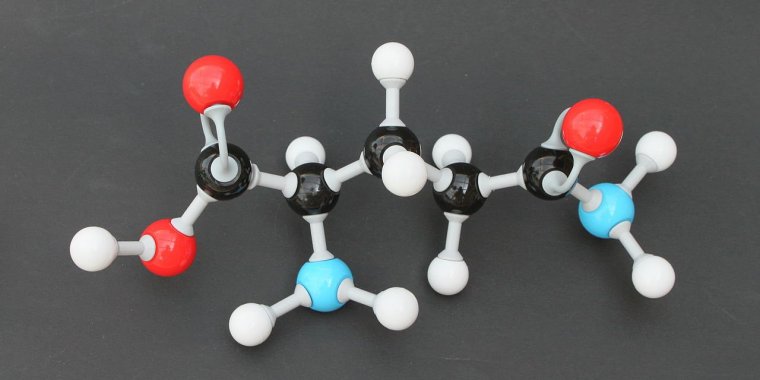| News / Science News |
Glutamine suppresses herpes in mice and guinea pigs
Glutamine supplements can suppress reactivation of herpes simplex virus (HSV) in mice and guinea pigs.

Glutamine chemical structure. ![]()
There is no cure for infection with HSV-1 and HSV2, viruses that can cause recurrent outbreaks of cold sores and genital sores in humans. Although antiviral medications can help shorten outbreaks, the virus persists in the body and can reactivate, which underscores the need for new treatment approaches.
Prior research demonstrated the importance of HSV-specific T cells for controlling recurrent HSV outbreaks, and that activated T cells require increased metabolism of glutamine (an amino acid produced by the body and found in food). Therefore, the authors speculated that glutamine supplementation might increase T-cell function and improve infection control.
To test this hypothesis, scientists from National Institute of Allergy and Infectious Diseases (NIAID) infected mice with HSV-1 and guinea pigs with HSV-2 and randomly assigned the animals to different treatment groups. Two weeks after infection, some animals received an oral glutamine supplement and others did not.
Results showed that mice that received glutamine were less likely to have HSV-1 reactivation than those that did not, and similarly, guinea pigs that received glutamine were less likely to have recurrent outbreaks of HSV-2 than those that did not receive the supplement.
Evaluation of host cellular gene expression in mice treated with glutamine showed that several genes inducible by interferon gamma (IFN-γ) had an increased response. IFN-γ is produced by virus-specific T cells and can inhibit viral reactivation.
Mice treated with glutamine also had high numbers of virus-specific T cells in infected nerve tissues.
Together, the results suggest glutamine may reduce HSV reactivation by improving the T-cell response to infection. Clinical trials are needed to determine whether this novel treatment approach would effectively treat HSV in humans, according to the authors. (National Institutes of Health)
YOU MAY ALSO LIKE




